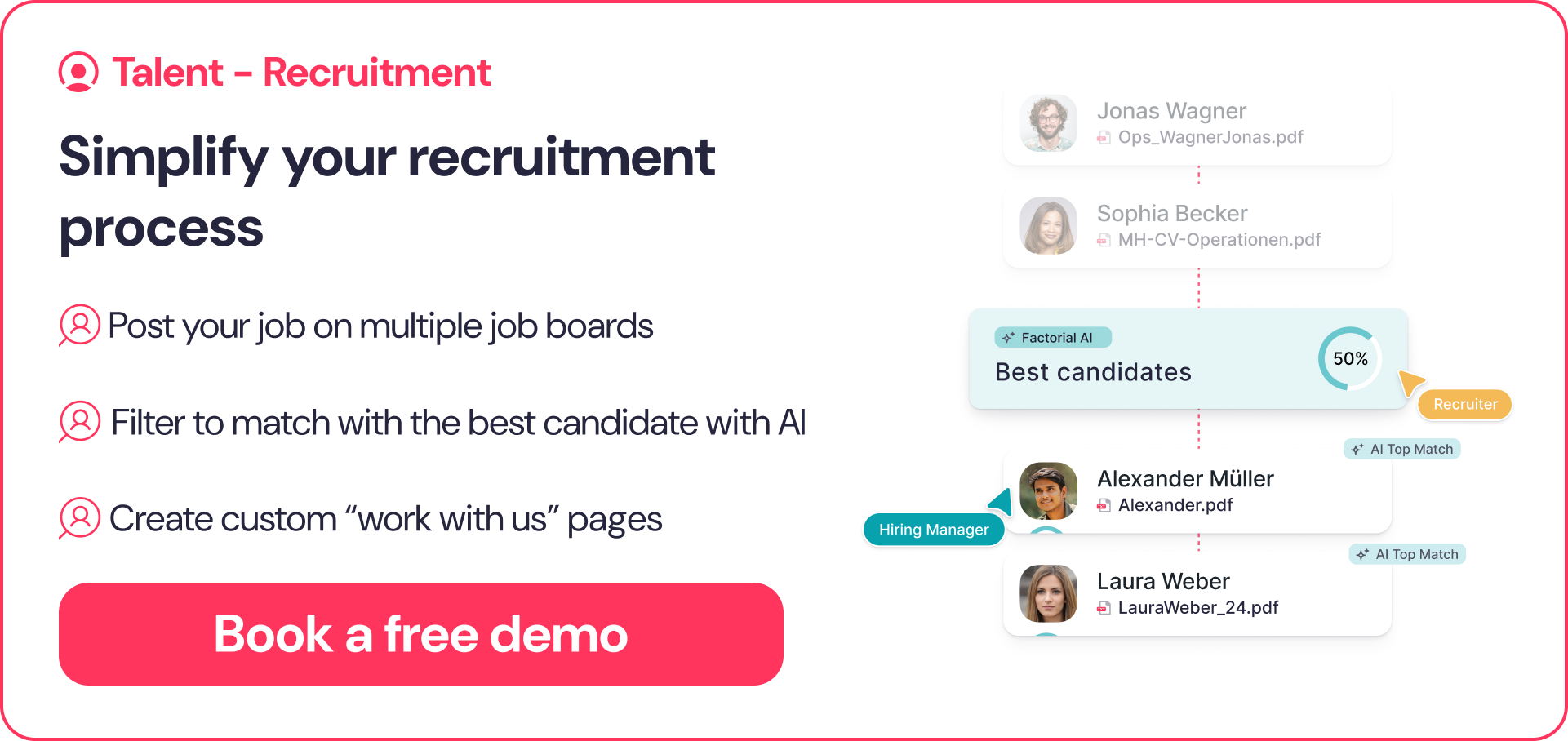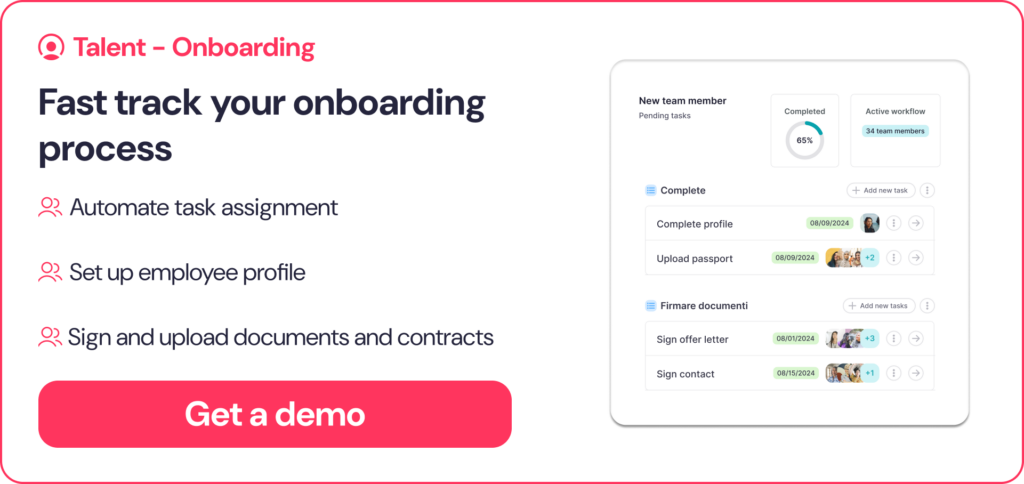As the labor market becomes more dynamic and complex, employers must navigate through employment classifications. It’s vital for employers to become familiar with the different employee types that exist within a business. Understanding the classification of employees helps employers decide which types are the most suitable for their organization.
Here, we will break down the most common types of employment, what to consider regarding employee types, dangers of misclassifying employees, and how to avoid employee type mistakes.
Let’s take a look!
TABLE OF CONTENTS
Key considerations for employee types
Dangers of misclassifying employee types
Avoid making employee type mistakes
Keep info in one place with an employee database ✅
Employee type defined
An employee type is a way of classifying the kind of relationship an employee has with their place of work. As an employer, there are a number of classifications you need to keep in mind when you hire a new employee.
Understanding the different employee types enables you to make informed decisions based on your business needs. This allows you, the employer, to consider the various types of employment and select the most suitable one according to your criteria. Don’t forget to take into consideration not all employee types will fit your company’s needs!
We’ve outlined some of the most common employee types in the workforce:
Types of employment
- Full-time
- Part-time
- Temporary
- Interns
- Seasonal
- Contingent
Common Employee Types
Full-time employees
- Full-time employees are permanent employees who you usually hire to work an average of 40 hours per week on an ongoing basis. You pay these employees a salary and you may have to provide them with certain benefits. For example, if you hire 50+ full-time employees, you must offer health care coverage (health insurance) to these employees and their dependents.
Part-time employees
- Part-time employees are permanent employees who you hire to work fewer than 40 hours per week. You will usually pay these employees on an hourly basis, and you are not obligated to provide them with additional benefits such as healthcare.
Temporary employees
- Temporary employees are hired for a short period of time, usually somewhere between six months to one or two years. This might be for a specific project or to boost productivity during busy times. Temporary employees can be full-time or part-time.
Interns
- Interns are also hired for a short period of time (a few months at best) and positions can be paid, partially paid, or unpaid. Interns are generally high school or college students looking to gain their first work experience.
Seasonal workers
- Seasonal workers are hired to cover seasonal increases in work (such as Christmas or summer months). Their employment is limited to the duration of their employer’s peak season.
Contingent workers
- Contingent workers are independent contractors, freelancers, consultants, or any other type of worker who you do not hire via an employment contract. These are individuals who you collaborate with on specific projects and tasks. As they are separate entities, you are not responsible for paying them any employment benefits.
Key considerations for employee types
Time tracking
Do you pay your employees by the hour, monthly, or by the project or task? Whether you need to keep track of your part-time employees or contingent workers, time tracking is essential for every employer. Considering each employee type requires a different set of financial obligations, it’s critical to have accurate and accessible timesheets for all of your employees.
Check out these time tracking platforms to automate all your time tracking needs!
Time off
How many vacation days are you required to provide for your employees? This requirement can vary significantly depending on the employment type, so ensure you understand the legally mandated number of vacation days. While certain employment types don’t require the employer to provide paid time off or vacation days; you should still familiarize yourself with the differences between paid time off and vacation days, as well as other types of leaves. This ensures compliance with employment laws and avoids any miscommunication with your employees.
Take a look to learn more about PTOs and vacation day
Performance reviews
Not sure what kind of performance review to conduct with your employee? Well, reviews can vary between employment types, sector, and job role. For instance, full-time employees are likely to receive a more comprehensive review, in contrast, part-time employees are likely to receive a less extensive review. Regardless, performance reviews are an opportunity to give employees constructive feedback as well as identify areas for improvement or advancement.
Read more to learn about the different types of performance reviews.
Payroll considerations
Are you struggling with your payroll? Payroll can be the most complicated part of your business. Even more when it comes to employee classification! Understanding employee types can help you navigate which employees receive a benefit package and which employees are paid by the hour. Not only that, but also who’s paid by the project or task and who’s responsible for paying taxes – the employer or employee. By addressing these factors, you can set up a payroll system that is efficient, well-structured, and compliant with labor laws.
Want to learn more? Check out this blog that outlines an essential checklist for payroll.
Dangers of misclassifying employee types
It’s important to understand employment classification so you avoid any potential misunderstandings or legal disputes. So comprehensive knowledge of employee types helps employers and HR managers make smart hiring decisions. Some potential dangers include:
- Fines and penalties: Not complying with employment laws by misclassifying your employees can be costly to your business.
- Overspending the budget: Hiring an employee based on your business’ needs also means identifying what type of employee you need to hire.
- Unsatisfied employees: Some employees may be disappointed when it comes to their employee type. Ensure that you provide accurate information about any opportunities you are offering to avoid any miscommunication.
- Employment complaints: Problems in your business could arise at any moment so ensuring you have proper documentation to counter any complaints your employees bring up is essential.
In the long run, choosing the appropriate employee type saves employers time and money both in terms of organizational efficiency and abiding by the law.
Avoid making employee type mistakes
Misclassifying an employee can be catastrophic to your business. To prevent committing errors when it comes to employee type, use these tips:
- Study the different types of employment and their criteria. Understand the distinction between full-time, part-time, temporary, interns, seasonal, and contingent employees. This knowledge could save you from being penalized for not compensating your employees correctly or incurring unnecessary expenses. For example, hiring a full-time employee rather than a contingent worker could lead to additional costs when you calculate benefits, sick leave, and overtime for your full-time employee.
- Ensure job descriptions match the appropriate employee type. This could help save you time during the hiring process for you (the employer) and the job seeker. Clearly stating the type of employee you are seeking will attract candidates who are genuinely interested in the job opportunity. For instance, stating you are looking for a seasonal employee will allow the hiring process to run smoothly while ensuring applicants understand the role.
- Accurately record all necessary information which supports your employee types. Maintaining proper documentation could help combat any disputes employees may have and can demonstrate compliance with employment laws. These documents include wages, timesheet, and benefits provided for employees. Ensure all documents are securely stored and can only be accessed by authorized employees such as HR managers.



